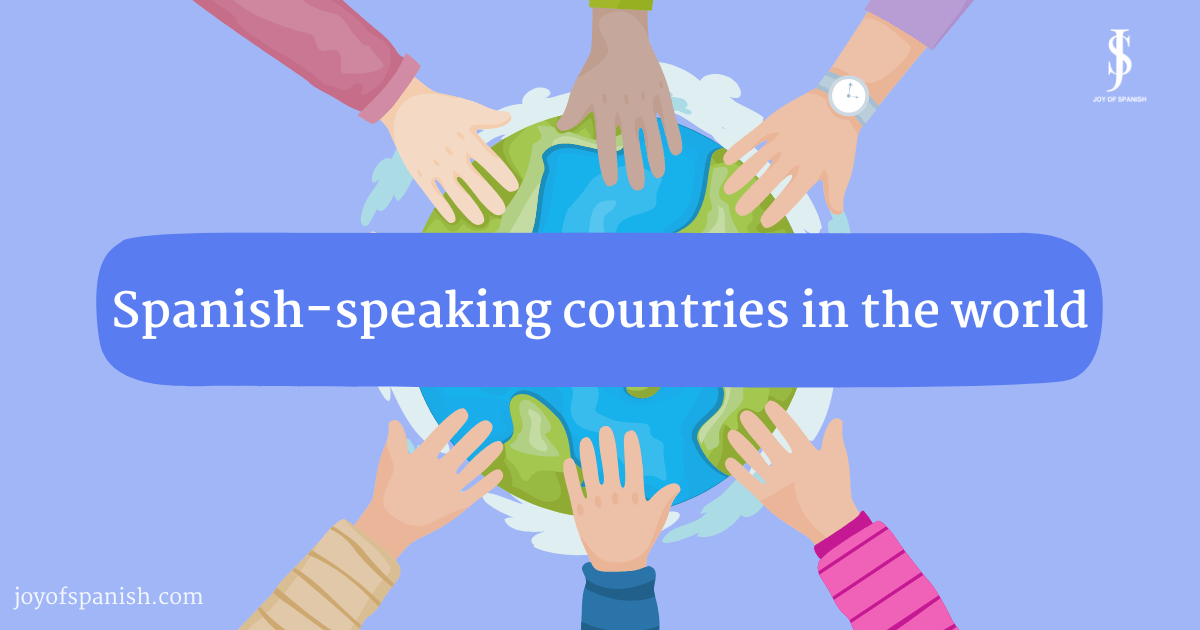Learning a new language unlocks a world of opportunities. But how many countries can you visit and speak Spanish with locals when you know this language?
Many people decide to learn Spanish for careers, studies, or hobbies. You have over 500 million Spanish speakers to connect with.
Spanish has a widespread reach across the world. Spain remains the primary origin of this language. Yet, you might be surprised that most Spanish speakers don’t live in this country.
Knowing the number of people who speak Spanish and its geographic reach is crucial to understanding its importance. Let’s discover all there is to know about it.
Before we continue.
Table of Contents
About the Spanish language
Spain’s Castile region gave birth to Spanish (Español), a Romance language. Castilian is what it’s called mainly in Latin America for this reason.
Its place of origin gave us the name Iberian Romance language. There are also Catalan, Galician, and Portuguese within this sub-language family.
The root of the Spanish language can be traced back to Latin. It reached the Iberian Peninsula after the Roman invasion in the 2nd and 3rd centuries BC.
In the 13th century, King Alfonso made Castilian the official language of the government administration. Since then, it has remained the primary language of this region till present times.
The Empire of Spain was among the largest empires in history in terms of size. It colonized an extensive area that included North, Central, and South America.
That is why many people on these two continents speak Spanish.
Spanish Speaking nations — Hispanophone

Spanish has spread extensively around the globe. Spanish-speaking people are abundant in countries ranging from the Philippines to Spain, the US to Colombia.
493 million people globally are native speakers, as per Cervantes’ recent study. The overall count increases to 591 million when we consider those who have a good level of proficiency or use it as a non-native tongue.
In brief, almost 600 million Spanish speakers worldwide comprise 7.5% of the world population. Following Mandarin and Hindi, it is the third most spoken mother tongue. It is also a vital language on the internet.
3rd most taught language in the globe
Around 24 million students are learning Spanish as a foreign language. It’s now the third most-studied language worldwide, following English and French.
There are many chances to master Spanish, regardless of where you live and the reasons for studying Spanish.
It is easily accessible because of plenty of resources. You can find tons of study materials, books, podcasts, audio and video lessons, and apps for learning Spanish.
The official language status of Spanish
Castellano, also known as Spanish, is the sole official language of Spain. The vast majority of people speak it as their first language.
Twenty sovereign nations have declared Spanish as their official tongue, either de facto or de jure. Puerto Rico also uses it as its official language as a US-dependent territory.
Dozens of international organizations have Spanish as their official language. E.g., the Organization for Security and Co-operation in Europe, the African Union, the World Trade Organization, the United Nations, the Organization of American States, and more.
Spanish holds official and legal status in 20 Hispanic nations and 1 US territory. Listed below are the 21 nations where Spanish is the authorized language.
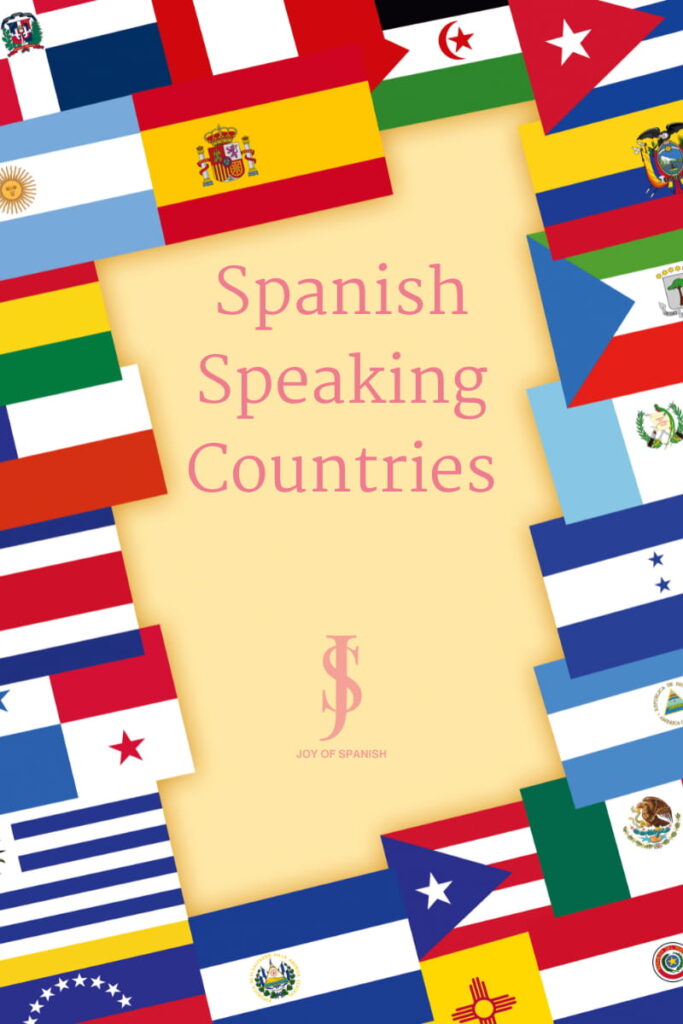
Argentina, Bolivia, Costa Rica, Dominican Republic, Chile, Colombia, Cuba, Ecuador, Nicaragua, Puerto Rico, El Salvador, Equatorial Guinea, Mexico, Peru, Panama, Guatemala, Spain, Honduras, Venezuela, Paraguay, and Uruguay.
The political influence of the Spanish still maintains a weight in many places, making it valuable. Territories such as the USA, Philippines, France, Morocco, and Belize are some examples.
Where In the World Is Spanish Spoken?
Spanish is omnipresent, stretching across cities, countries, and continents.
The Hispanic world is vast and constantly growing. Spanish is spoken widely in various regions around the globe. Let’s dive in!
1. Spanish speakers in Europe
The five official languages of Spain are Spanish, Catalan, Galician, Basque, and Aranese.
In Spain, people speak various languages. Despite many languages, Spanish (or Castellano) is spoken by almost 95% of the people in Spain.
Andorra, though a small place, has 40% Spanish speakers. Gibraltar, a British Overseas Territory, has many bilingual residents in English and Spanish.
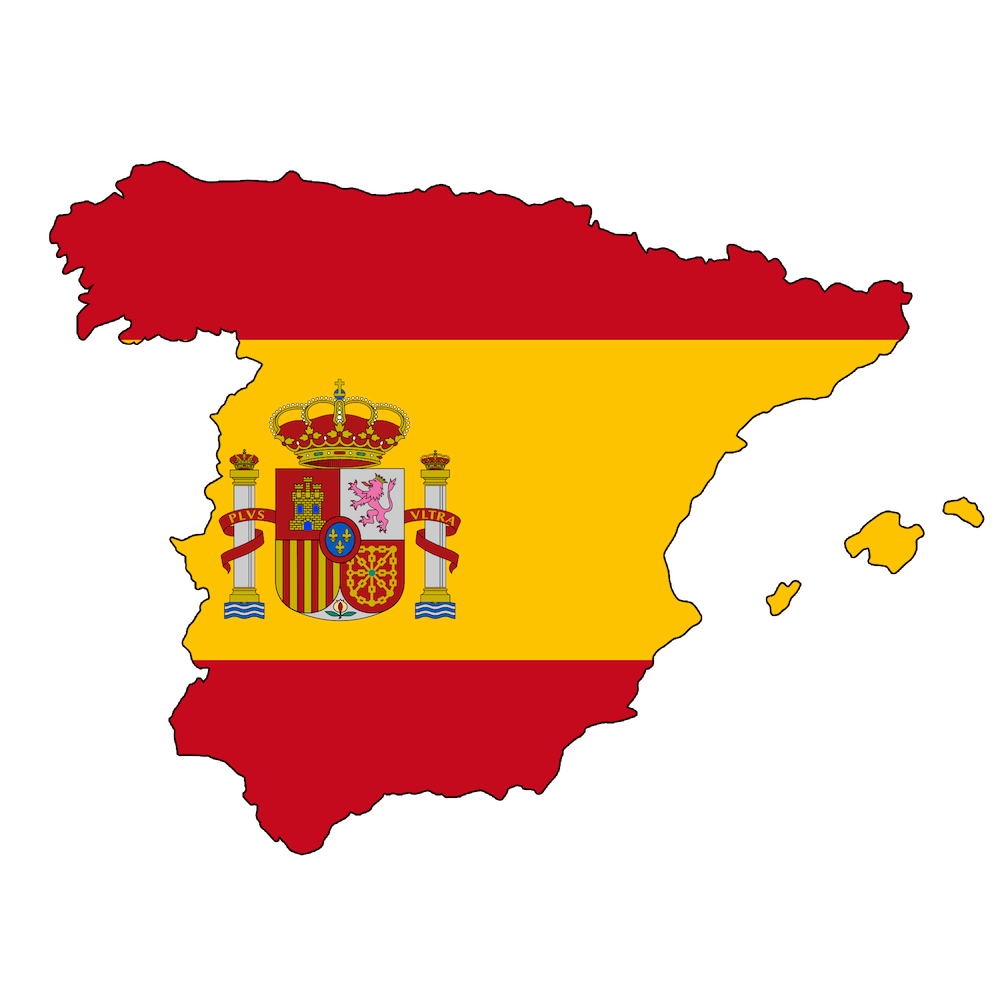
Among European languages, Spanish ranks sixth after Russian, German, French, English, and Italian. There are 46 million speakers, making it a worthwhile language in Europe.
Other countries in Europe
Spanish lacks official status or isn’t widely spoken in other European regions. Still, active communities of native speakers exist in many nations.
The list includes France, Portugal, Italy, Finland, Denmark, Austria, the Netherlands, the UK, Belgium, Switzerland, Sweden, Ireland, Romania, Germany, and others.
The Spanish-speaking population ranges from 2% to 10% in these areas. Native speakers can be found in almost every European country, albeit in small percentages.
This is one of the 24 official languages in the European Union.
2. Spanish speakers in North America
Spanish is widely spoken in two major North American countries. Although Spanish is commonly spoken in the United States, it is not an official language.
Spanish is the only official language of Mexico in the region. In Canada, many Spanish and Latin American immigrants speak this language.
The Spanish-speaking community in the USA
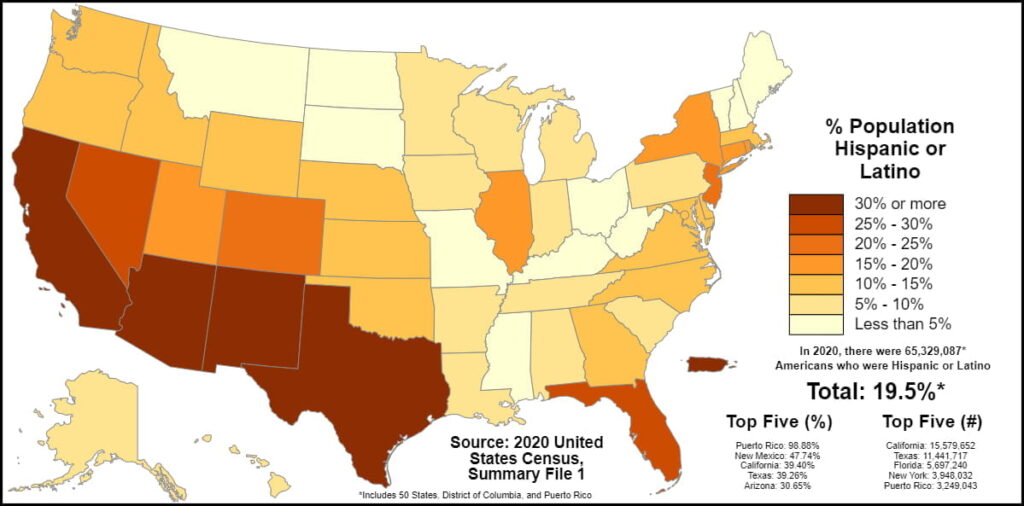
Like English, Spanish has yet to be officially acknowledged in the USA. Still, a vast number of speakers are native or bilingual.
As of 2024, 42 million people in the US speak Spanish as their native language, accounting for 13% of the population. Also, around 12 million bilingual Spanish speakers live in the US.
Overall, the USA has around 54 million Spanish speakers. The number of speakers exceeds that of Spain and Colombia. This makes it the second-largest Spanish-speaking country after Mexico.
In the US, Spanish is the language most commonly taught. Given the rising number of Spanish students and Hispanic ethnic groups, we can only expect the number to increase.
By 2050, the US Census Office predicts that there will be 138 million Spanish speakers. The US could surpass all other Spanish-speaking nations and become the largest.
How many people in Mexico speak Spanish?
Mexico boasts the highest number of native Spanish speakers in the world. It has double the number of Spanish speakers as Spain.
The government acknowledges 68 national languages, 63 indigenous, and several dialects in Mexico. The existence of so many languages promotes diversity.
Most of the population, almost 90%, spoke Spanish. As of 2024, 125 million people speak Spanish as their mother tongue or second language in Mexico.
3. Spanish speakers in Central America
The seven countries of Central America have a large number of Spanish speakers.
All six nations, namely Guatemala, El Salvador, Nicaragua, Costa Rica, Panama, and Honduras, have Spanish status as “de jure,” except for Belize.
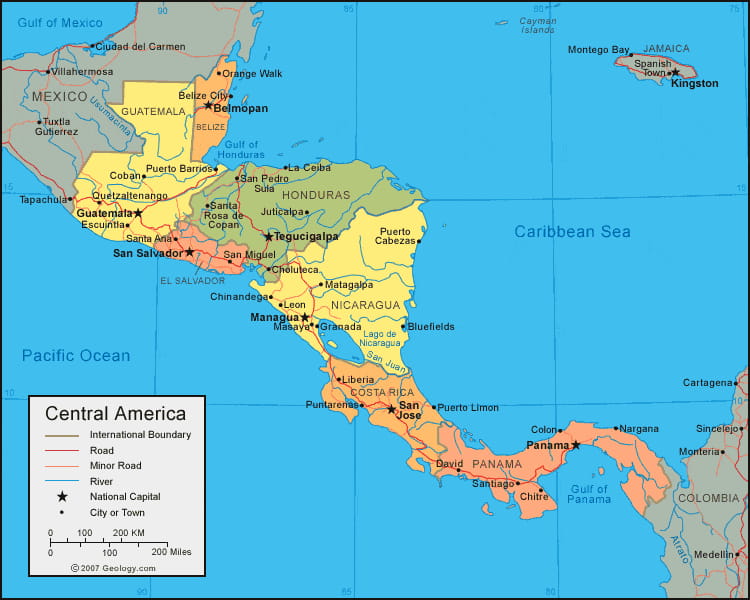
Spanish is spoken as a first or second language by 90% to 99% of the population in this region. Besides, around half of the people in Belize can speak Spanish.
Approximately 170 million people use Spanish to communicate, out of Central America’s 182 million total population.
Central America is where Spanish is spoken continuously across borders. This is a delightful experience for Spanish language lovers.
4. Spanish speakers in the Caribbean
The Caribbean region is home to many independent nations and overseas territories. In this place, Spanish is not a language people typically speak.
Spanish is only authorized on three islands (Cuba, Dominican Republic, and Puerto Rico). The two are independent, while Puerto Rico is a part of the US.
Spanish is also helpful in the Bay Islands (Honduras), the Corn Islands (Nicaragua), and Nueva Esparta (Venezuela). It has a wide presence in Isla Cozumel, Isla Mujeres (Mexico), and San Andrés, Santa Catalina (Colombia).
5. Spanish speakers in South America
Of 10 nations, Spanish is the official language in 9 with a notable population. The countries listed are Argentina, Bolivia, Colombia, Chile, Paraguay, Peru, Ecuador, Uruguay, and Venezuela.
Nine countries have their dominant language. In some areas, Quechua, Guaraní, and Aymara, among other indigenous languages, are useful alongside Spanish.
There are many dialects and varieties of Spanish as well. Learners could get stuck remembering new words, phrases, and pronunciations. It’s still mainly in Spanish!
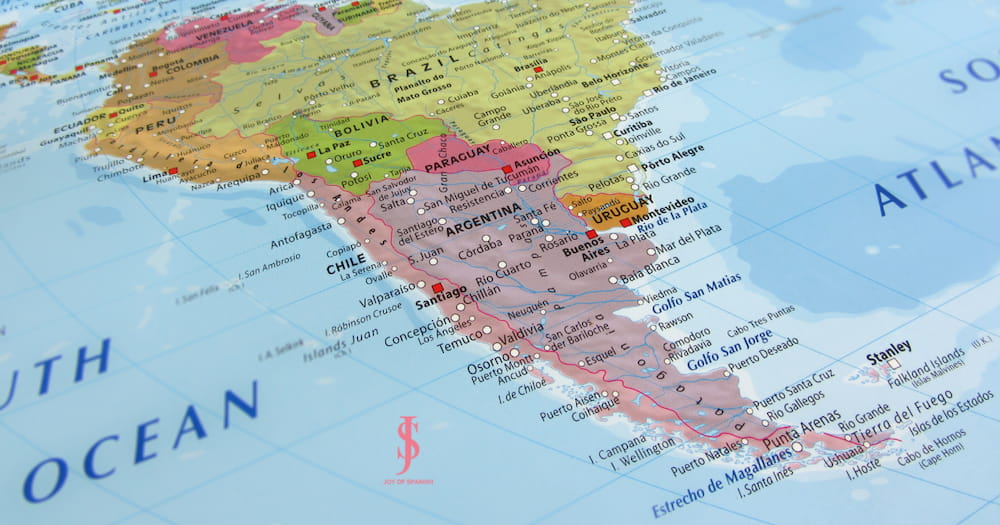
Portuguese is Brazil’s only official and national language, and Spanish is not much preferred. As Portuguese is like Spanish, your Spanish ability can assist you in grasping a few concepts rapidly.
Almost 50% of South Americans speak Spanish, like Brazilian Portuguese.
6. Spanish speakers in Africa
Unlike the Western Hemisphere, Africa has a small number of Spanish-speaking inhabitants.
The only African country with an outstanding number is Equatorial Guinea (República de Guinea Equatorial). This is because, since 1944, this has been the official and national language.
The diverse ethnic group of the country speaks Equatoguinean Spanish, a regional variant of Spanish used as a lingua franca. Nearly 70% of the population speak Spanish; most are fluent, mainly around the capital, Malabo.
It has many similarities with Spanish spoken in Spain and Latin America. Despite this, accents, words, and expressions vary immensely.
This resulted from the country’s geographical isolation. Further, the impact of German, Portuguese, French, and other regional languages has been felt in recent centuries.
A sizeable number of Spanish-speaking people live in Morocco and Western Sahara. The reason is once again due to its history and proximity.
These are some places in Africa where you can check your Spanish language skills.
7. Spanish speakers in Asia
Spanish has never been a popular language in Asia.
Spanish explorers expanded their influence and colonized the Philippines during the 16th century.
From the beginning until 1973, Spanish was the official language of the government. Hence, it has been a widely understood language in this region historically.
Although Filipino is the official and most commonly used language, Spanish is spoken by many as a second or third language.
Thousands of Spanish loanwords are present in Filipino and hundreds of indigenous lingoes. About 20% to 30% of words in Tagalog have their roots in Spanish.
The spelling system of many languages has been notably influenced by Spanish orthography.
Around one million people speak Chavacano, a Spanish-based creole originating in the Philippines. Many schools teach Spanish as well.
Other than the Philippines, fewer Spanish speakers exist in other Asian countries. Most of them are learners. Through studying, they became proficient and earned diplomas and certifications such as the Spanish DELE and SIELE.
Immerse yourself in the world of Spanish
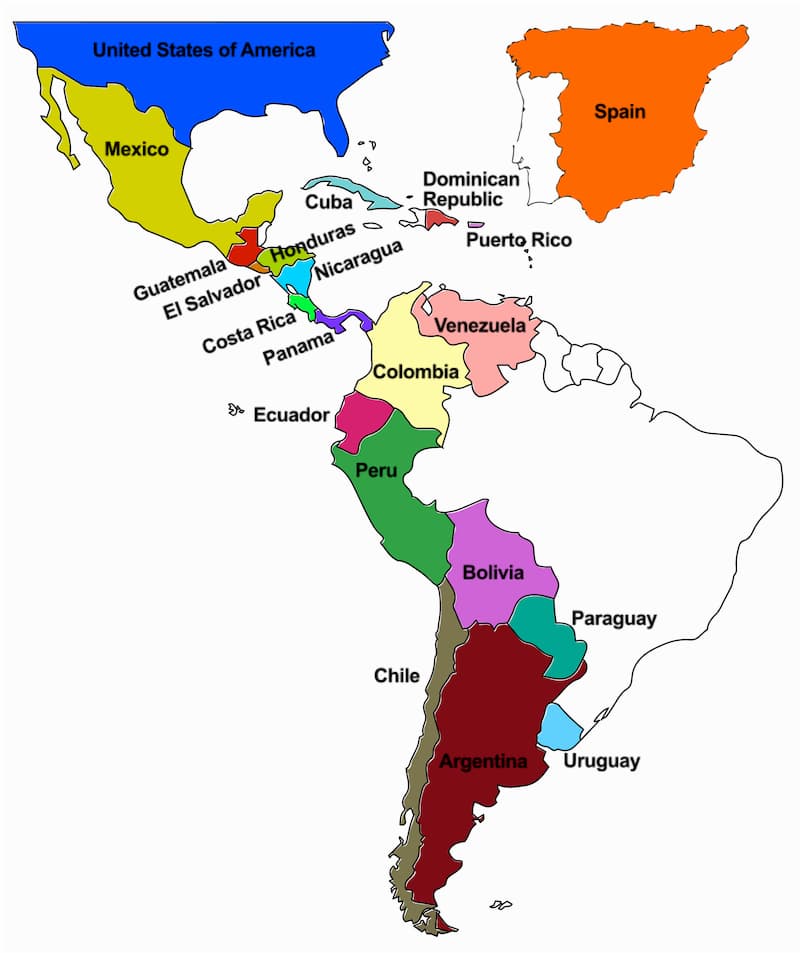
I hope this blog motivated you to learn or keep studying Spanish. It can open up a world of possibilities and expand your horizons.
What’s stopping you from starting your next Spanish lesson?
Check LanguageNext regular classes, or you can learn Spanish online tailored to the DELE, DIE, Telc, and SIELE.
If you’re craving more Spanish and eager to know more, check out our other blog posts. It can help you discover the fascinating world of all things Spanish.
Would you like to express your opinion on this subject? Please leave a comment below.
